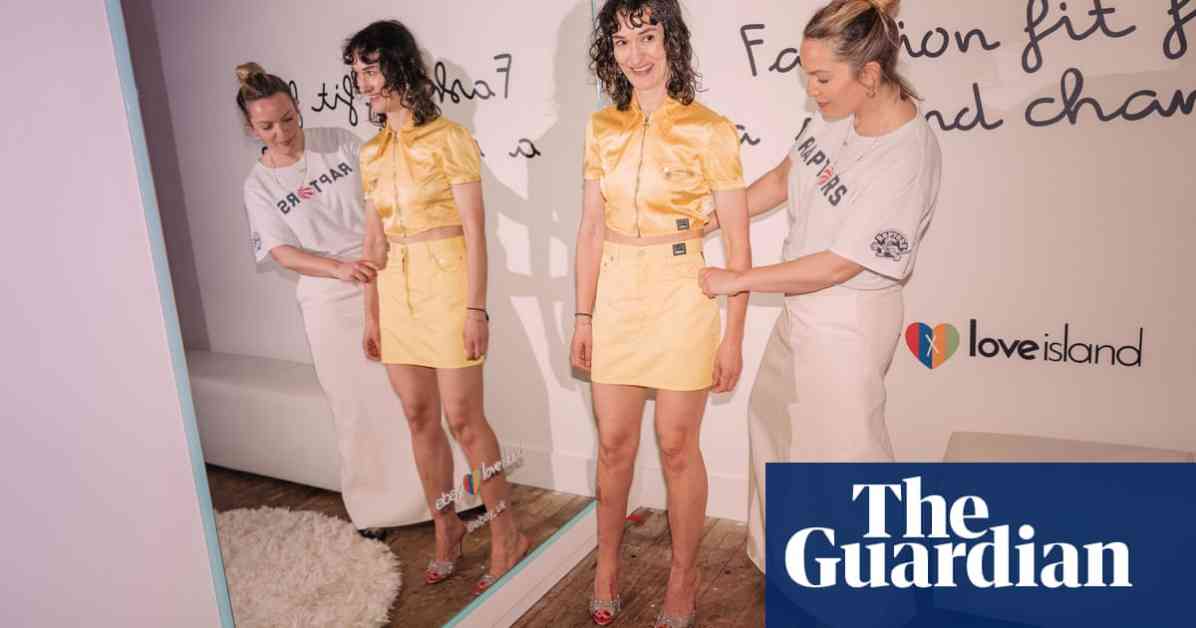When Love Island returned to TV this week for its 11th series, the headlines were dominated by the addition of the first ever celebrity contestant, the former Towie star Joey Essex. But the WhatsApp conversations have already turned to familiar territory: what the islanders are wearing.
With the programme taking place in Mallorca, the typically young, typically honed islanders spend their days in skimpy swimwear gossiping about other members of the show, flirting and arguing. In the evening, they do the same, but having adopted a “go hard or go home” approach to dressing up, with the women in dresses with midriff-revealing cut-outs, crop tops and boob tubes.
These clothes are, almost without fail, accompanied by vertiginous heels to gingerly walk from the pool to the signature Love Island location: the fire pit. Placed in couples from the start, 12 islanders fight it out – and switch allegiances – with one couple eventually crowned the winner. With six episodes a week over eight weeks, the sheer number of outfits on display is dizzying.
If these clothes were previously provided by fast fashion retailers such as I Saw It First, they have been provided by eBay since 2022. This was a massive shift from the show’s previously criticised endorsement of fast fashion brands. Secondhand – or pre-loved – clothes now dominate. With dressed-up labels such as House of CB and Meshki mixed in with 90s Versace, the glamour quotient remains high.
Love Island is a breeding ground for trends – from water bottles in 2017 to name necklaces in 2021 and varsity jackets last year – but it’s the serious glam that captivates.
This week, eBay had a pop-up event in east London called the Shared bed design ideas, where fans of the show swapped a piece of their old clothing for something potentially worn by a previous islander, enjoying the skills of Amy Bannerman, the show’s stylist.
Bannerman says islanders were initially sceptical of secondhand clothes. “We were selling it in a little bit more,” she says. “Now, the whole attitude has completely changed.” She says there’s still demand for a certain look. “They always want to look like they’re going out … the glam factor. We have influence to a certain degree, but we’re led by them as with the cut-out dresses. That’s their thing, so we give them what they want.”
The wider demand for secondhand has grown exponentially: WGSN reported in March that 40% of gen Z shops secondhand. Things such as the Love Island partnership are crucial to this, because the islanders show that secondhand doesn’t have to mean my old band T-shirt. “We know that from an environmental point of view, saturation is such that almost nothing is actually going to make a dent,” says Orsola de Castro, the co-founder of people-and-planet organisation Fashion Revolution. “This is the biggest fuck-you to the fast fashion industry I’ve ever seen.”
Of course, the islanders are not beholden to secondhand clothes once they leave the show. Although 2022’s Ghouri became an eBay ambassador, others have signed deals with fast fashion brands such as Boohoo, In The Style and Pretty Little Thing.
Love Island has also seen viewing figures drop from a high of 6 million in 2019 to 1.3 million for the final in 2023 so the impact of what contestants wear may be dwindling. But, De Castro says, the shift has already been made. “Six years ago, I did a project with schoolchildren about the impact of cheap clothing,” she says. “Every single one of them pledged to buy more secondhand. If that happened today nobody would be [pledging] that, because they would all be doing it already.”
As for me, it was something of a relief to change back into my own take on secondhand. I love Love Island and admire the islanders’ commitment to glam. But comfort – and band T-shirts – will always be more my speed.
When it comes to fashion, the trends set by shows like Love Island can have a significant impact on the way people shop and dress. The shift towards secondhand clothing on the show is not only a nod to sustainability but also a reflection of changing consumer attitudes towards fast fashion.
The rise in popularity of secondhand fashion among younger generations is a positive step towards reducing the environmental impact of the fashion industry. By showcasing secondhand clothing on a popular platform like Love Island, the show is influencing viewers to consider more sustainable fashion choices.
Additionally, the concept of the Shared Wardrobe pop-up event is a creative way to promote the idea of swapping and reusing clothing. It encourages fans to participate in a more circular fashion economy, where pre-loved items can find new homes and be appreciated by others.
Overall, the fashion choices made by the Love Island contestants are not just about looking good, but also about making a statement and setting trends. Whether it’s through secondhand pieces or glamorous ensembles, the islanders are shaping the way viewers think about fashion and sustainability.










